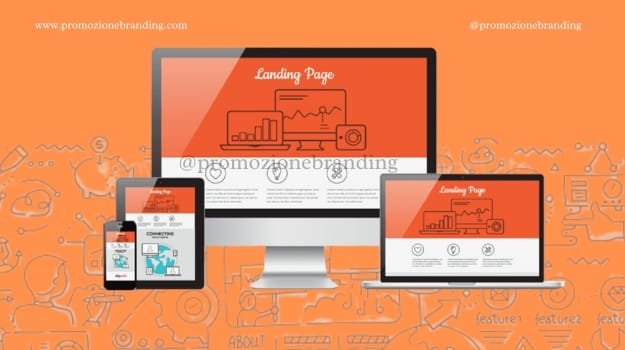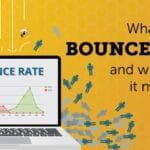
In today’s digital age, businesses rely heavily on their online presence to attract new customers. Whether you own a small business or a large company, having a strong website is key. But there’s one tool in particular that plays a crucial role in turning website visitors into actual customers: landing pages. Landing pages are special web pages designed with one main goal in mind—to convert visitors into leads.
What Are Landing Pages?
Think of a landing page as a digital front door to your business. When someone clicks on an ad, a search result, or an email link, they land on this page. But unlike regular website pages that can cover many different topics, landing pages have one single purpose. They are designed to guide visitors to take a specific action, such as signing up for a newsletter, downloading a free eBook, or making a purchase.
Landing pages usually contain simple but important information. There’s no need for a bunch of distractions, like multiple links or tons of text. Instead, everything on the page works together to encourage visitors to take that one action. The focus is on making the journey from visitor to customer as smooth as possible.
Why Are Landing Pages So Important?
You may wonder why landing pages are such a big deal. Can’t visitors just explore the whole website and make decisions on their own? Well, they could, but that often leads to confusion and distractions. People are more likely to take action when they are presented with clear, straightforward choices.
Landing pages serve as a laser-focused tool that highlights what’s important. They are like a well-lit path that leads your visitors directly to the destination you want them to reach. And that’s where the magic happens: when visitors are given clear directions, the chances of them becoming a lead or making a purchase are much higher.
Key Elements of an Effective Landing Page
Now that you understand the purpose of landing pages, let’s talk about how to make them effective. Here are some key elements to keep in mind:
1. A Clear and Strong Headline
The headline is the first thing visitors will see, so it has to grab their attention right away. Keep it simple, direct, and relevant to the action you want them to take. For example, if you’re offering a free eBook, your headline could say something like, “Download Your Free Guide to Boost Your Sales Now.”
2. Compelling Call-to-Action (CTA)
The call-to-action (CTA) is one of the most important parts of your landing page. This is the button or link that tells visitors exactly what to do. A good CTA is clear and action-oriented. Words like “Sign Up Now,” “Get Started,” or “Claim Your Free Offer” work because they encourage people to take immediate action.
3. Minimal Distractions
Keep the design of your landing page clean and simple. Avoid unnecessary links, images, or text that could distract visitors from the main goal. You want them to focus on one thing: taking the desired action.
4. Social Proof
People trust recommendations from others. By including reviews, testimonials, or logos of companies you’ve worked with, you can build trust with your audience. Social proof reassures visitors that others have had a positive experience with your product or service.
5. A Sense of Urgency
Creating a sense of urgency can prompt people to take action faster. For example, using phrases like “Limited Time Offer” or “Only a Few Spots Left” can make visitors feel like they need to act now before it’s too late.
Optimizing for Conversions
To truly harness the power of landing pages, you need to optimize them for conversions. Here are a few optimization tips:
1. A/B Testing
A/B testing is when you create two different versions of your landing page to see which one performs better. You might try changing the headline, button color, or image to see what encourages more people to convert. Testing helps you make data-driven decisions to improve your page over time.
2. Mobile-Friendly Design
More and more people are browsing the web on their phones. Make sure your landing page looks good and works smoothly on mobile devices. A page that’s difficult to navigate on a phone could lose potential leads.
3. Fast Loading Speed
People are impatient online. If your landing page takes too long to load, visitors will likely leave before it even appears. Use tools to check your page’s speed and make necessary adjustments to ensure it loads quickly.
How Landing Pages Help with Lead Generation
Lead generation is all about getting potential customers to express interest in your business. A well-optimized landing page is an excellent tool for this. When visitors land on your page, the goal is to collect their contact information—usually through a form. This form often asks for a name and email address in exchange for something valuable, like a free guide or discount.
Once you have this information, you can follow up with those leads through email marketing or other campaigns. It’s like planting a seed. You’ve got their interest, and now you can nurture that relationship until they’re ready to buy.
Conclusion
Landing pages are a powerful tool for turning website visitors into leads and customers. By optimizing your landing pages with a strong headline, clear CTA, and minimal distractions, you can boost your conversion rates. Add in social proof, a sense of urgency, and regular testing, and you’ll see even better results. So, whether you’re just starting or looking to improve your current landing pages, remember that each tweak can bring you one step closer to more leads and higher sales.
FAQs
1. What is a landing page?
A landing page is a specific webpage designed to guide visitors to take a particular action, such as signing up for a newsletter or making a purchase.
2. How does a landing page help in lead generation?
Landing pages collect contact information from visitors, which allows businesses to follow up with potential leads and turn them into customers.
3. What is a call-to-action (CTA)?
A CTA is a button or link that tells visitors what action to take, like “Sign Up Now” or “Download for Free.”
4. Why is mobile optimization important for landing pages?
Many people browse the web on their phones, so a mobile-friendly landing page ensures a smooth experience, making it more likely for visitors to convert.
5. How can I improve my landing page’s performance?
You can improve performance by A/B testing, speeding up the page’s load time, and making sure it’s easy to navigate, especially on mobile devices.








